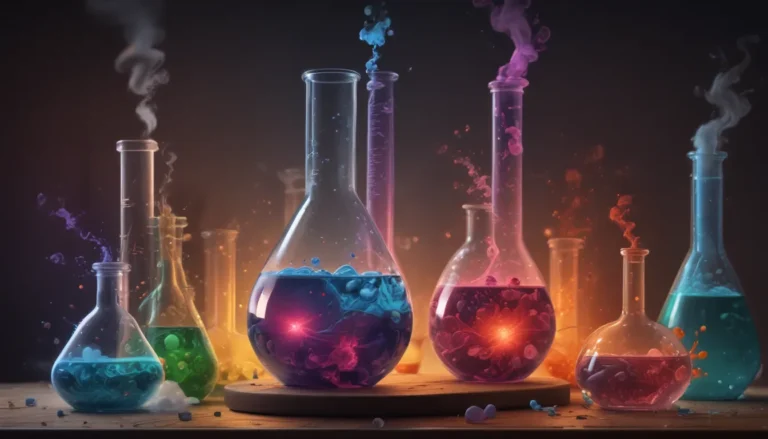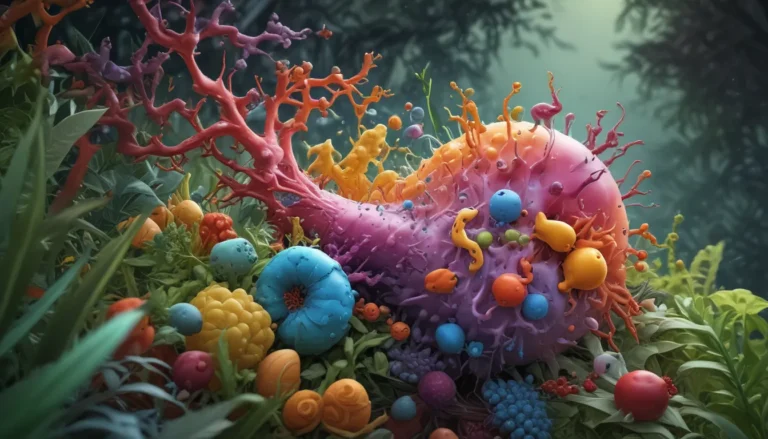A Note About Images: The images used in our articles are for illustration purposes only and may not exactly match the content. They are meant to engage readers, but the text should be relied upon for accurate information.
Welcome to the captivating realm of Gibbs Free Energy, a cornerstone concept in the field of thermodynamics that unlocks the secrets of chemical reactions. Named after the illustrious American scientist Josiah Willard Gibbs, this intriguing phenomenon plays a pivotal role in determining the spontaneity and feasibility of chemical processes. In this exploration of Gibbs Free Energy, we will unravel 10 extraordinary facts that will deepen your understanding of this vital concept and shed light on its implications in the fascinating world of chemistry.
Understanding the Essence of Gibbs Free Energy
Gibbs Free Energy is a state function that serves as a key predictor of whether a reaction will occur spontaneously. By considering both heat (enthalpy) and disorder (entropy), this concept offers valuable insights into the maximum work that a system can perform under constant temperature and pressure conditions. It acts as a guiding compass in deciphering the phase behavior of substances, resembling a crystal ball that foretells whether a substance will manifest as a solid, liquid, or gas.
Delving into the Intricacies of Gibbs Free Energy
Dive deeper into the intricate world of Gibbs Free Energy by exploring its core characteristics and functionalities:
- State Function: Gibbs Free Energy is a thermodynamic property that measures the energy available for useful work in a system. It’s a state function, meaning its value solely relies on the initial and final states of the system, making it a valuable analytical tool.
- Spontaneity Determinant: By assessing the Gibbs Free Energy change (?G) for a reaction, one can ascertain the spontaneity of the process. A negative ?G signifies spontaneity, while a positive value indicates non-spontaneity.
- Enthalpy and Entropy Consideration: Combining enthalpy (heat energy) and entropy (disorder degree), Gibbs Free Energy offers a holistic perspective on the spontaneity of a process, surpassing thermodynamically favorable enthalpy assessments alone.
Unveiling the Applications and Implications of Gibbs Free Energy
Explore the diverse applications and implications of Gibbs Free Energy in various scientific domains:
- Equilibrium Constant Calculation: Utilizing the Gibbs Free Energy equation (?G = -RTln(K)), one can determine the equilibrium constant (K) for a chemical reaction, offering insights into reaction extent.
- Maximum Work Determination: The negative value of Gibbs Free Energy change (?G) denotes the maximum work attainable from a system, enlightening the efficiency and work potential in thermodynamic processes.
- Temperature Sensitivity: Gibbs Free Energy is profoundly impacted by temperature variations, influencing the spontaneity of reactions and shedding light on their thermodynamic feasibility.
- Chemical Equilibrium Role: In equilibrium states, where ?G equals zero, Gibbs Free Energy plays a pivotal role in maintaining dynamic balance between forward and reverse reactions, crucial for reaction forecasting.
- Phase Behavior Prediction: By analyzing Gibbs Free Energy changes across temperature and pressure, scientists predict the phase behavior of substances, fundamental for industries like materials science and chemical engineering.
Unraveling the Legacy of Josiah Willard Gibbs
The concept of Gibbs Free Energy pays homage to the pioneering work of the esteemed American scientist Josiah Willard Gibbs. Renowned for his seminal contributions to thermodynamics and energy transformations in chemical systems, Gibbs laid the groundwork for our profound understanding of this crucial phenomenon.
In conclusion, Gibbs Free Energy stands as a beacon of knowledge in the realm of chemistry, enlightening us on the spontaneous nature and directional course of chemical reactions. Its incorporation of enthalpy and entropy changes paves the way for predicting and manipulating reactions in myriad fields, from industrial processes to environmental sciences and biochemistry. Dive into the captivating world of thermodynamics with an appreciation for the invaluable insights offered by Gibbs Free Energy.
FAQs: Satisfying Your Curiosity
- What is Gibbs Free Energy?
-
Gibbs Free Energy is a thermodynamic concept measuring the reversible work performable by a system at constant temperature and pressure, factoring in enthalpy and entropy changes.
-
How is Gibbs Free Energy related to spontaneity?
-
A negative Gibbs Free Energy value indicates spontaneity, signifying a reaction’s ability to proceed without external energy inputs, while a positive value denotes non-spontaneity.
-
How can Gibbs Free Energy be calculated?
-
Gibbs Free Energy (?G) can be calculated using the equation: ?G = ?H – T?S, where ?H represents enthalpy change, ?S symbolizes entropy change, and T is the temperature in Kelvin.
-
Is Gibbs Free Energy akin to activation energy?
-
No, Gibbs Free Energy differs from activation energy, which denotes the energy necessary to initiate a chemical reaction. Gibbs Free Energy, instead, determines reaction spontaneity post-initiation.
-
What are the practical applications of Gibbs Free Energy?
- Gibbs Free Energy finds practical utility across diverse fields like industrial processes, environmental sciences, and biochemistry, aiding in reaction prediction, optimization, and efficiency enhancement.
Embark on a captivating journey through the enchanting world of Gibbs Free Energy, where scientific mysteries intertwine with practical applications, empowering researchers and enthusiasts alike with newfound knowledge and appreciation for the wonders of thermodynamics.






